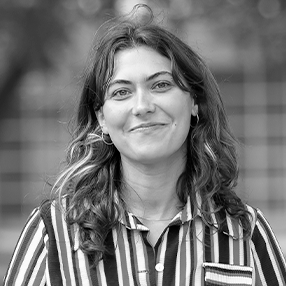At the New York City AIDS Memorial
Your absence is a bisected city
block where a hospital once stood.
The footprint of a yellow house on Providence’s east side
we once shared. Demolished. A white pickup you drove
decorated with black dice. The ground beneath it
crumbled—poof—then paved over, engraved like verses
into stone. When I was told what happened to you,
I sank to the wet floor of a bar’s bathroom, furious
that you left us to reassemble ourselves
from rubble. To build, between subway stops,
some saccharine monument
pigeons shit on, empty except for a circle of queens
chattering, furnishing the air like ghosts. Your death
means I’m always equidistant from you,
no matter where I travel, where I linger,
misguided, hopeful. Last night, by candle light,
a woman unearthed me.
Together, she and I grieved
the impossibility of disappearing
into one another. Poof. Since you died,
erasure obsesses me. Among the photos at the memorial,
one of a banner that reads WHERE IS YOUR RAGE?
ACT UP FIGHT BACK FIGHT AIDS, carried by five
young men. Your face in each. Your beautiful face.
Copyright © 2022 by Stefania Gomez. Originally published in Poem-a-Day on March 10, 2022, by the Academy of American Poets.
“I wrote this poem while visiting the memorial to the more than one hundred thousand New Yorkers lost to the ongoing AIDS epidemic. The memorial is beautiful, with lines from Walt Whitman’s ‘Song of Myself’ engraved into the stone floor by the artist Jenny Holzer. I wanted to pay my respects to my queer elders who were taken by the disease, as well as those who fought tirelessly to force the U.S. government to develop effective treatments for it. Yet, I had also come because I was a grieving person. And I wanted to understand how we memorialize those we’ve lost, especially due to public health crises or systematic endangerment by certain administrations. In this poem, I am asking why we build the memorials we build, in public or through poems. And if they can’t bring back the dead, what can they do?”
—Stefania Gomez

